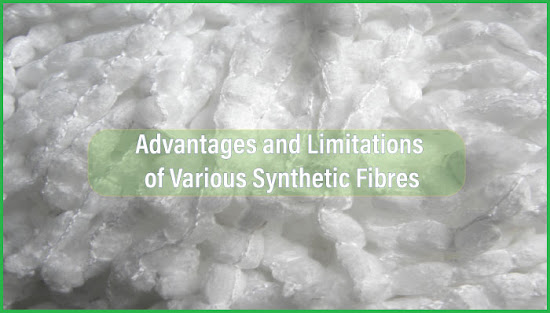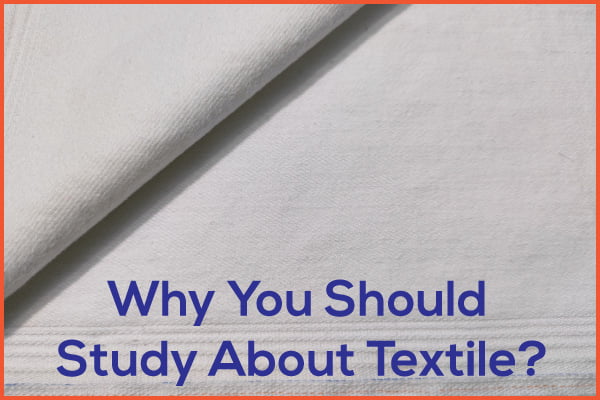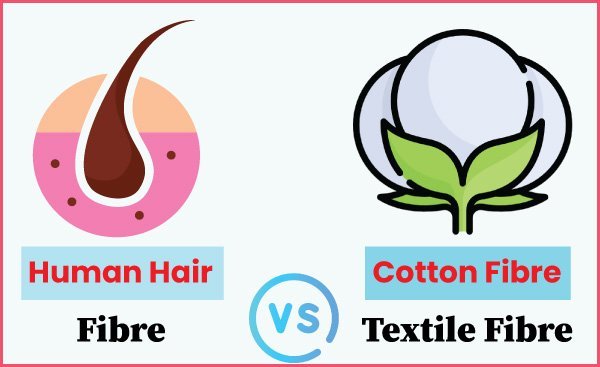Advantages and Limitations of Various Synthetic Fibres
Last updated on August 8th, 2023 at 11:47 pm
The properties of a fabric depend primarily on the properties of the fibres from which they are made. Hence familiarity with the characteristic properties of a fibre will aid the consumer in knowing what to expect of different fabrics and what care is required in maintaining them.
Viscose or Rayon
Advantages
- Viscose rayon is suitable for wide range of fabrics from lightweight luxury types that drape well to heavy, strong, durable types that are stiff and crisp.
- It can be dyed easily with all the dyes that take on to cellulosic fibres.
- It blends well with other fibres.
- It is very absorbent.
- It can be given a variety of finishes.
- It can be laundered or dry-cleaned, depending on the dye used or the finish given.
- It can be bleached with chlorine bleaches but peroxide bleach is preferable.
Limitations
- Fibres are weaker than cotton and weaker still when wet.
- Abrasion resistance is poor.
- Fabrics wrinkle easily because of the poor resiliency of the fibres.
- Fabrics have very poor dimensional stability due to progressive shrinkage of the fibres.
- Rayon is susceptible to mildew.
- It is damaged more easily than cotton by mineral acids.
- Fabrics require low ironing temperature.
Polynosic Fibres
Advantages
- Fabric possesses better strength than viscose or rayon.
- Dimensional stability of the fabric is good.
- Abrasion resistance is better than that of viscose rayon.
- Fabrics may be crisp and firm with good drapability.
- Fabrics are absorbent.
- Fabrics are good conductors of heat, hence are good for summer.
- Their luster is subdued resembling that of silk.
- Polynosics can be given resin treatment for wrinkle resistance without any loss in strength.
- Fibres/Fabrics can be dyed and printed like cotton.
- Fabrics are easy to launder and can also be dry-cleaned.
Limitations
- Fabrics are weakened by sunlight.
- Fibre has poor resiliency.
- Fabrics require low ironing temperatures.
- Polynosics are susceptible to mildew.
Acetate
Advantages
- Fabrics have a luxurious soft feel and silky appearance.
- Acetate has excellent draping qualities.
- Since the fibres are thermoplastic durable surface effects like embossing, schreinering, moireing, cireing can be given to the fabric.
- It can be dyed with disperse dyes or it can be dope dyed. Dope dyed fabrics have excellent fastness to light, crocking, perspiration, washing and gas-fading.
- Fabrics are unaffected by mildew or moth.
- It can be bleached with hydrogen peroxide or sodium perborate at low temperatures.
Limitations
- Acetate fabrics have poor absorbency.
- They are weak when wet.
- Acetate has poor abrasion resistance.
- Fabrics build up static electricity.
- Fibre dissolves in acetone and acetic acid.
- Fibre weakens on exposure to sunlight.
- It requires special dyes.
Nylon
Advantages
- Nylon is very strong even when wet.
- It is resilient and elastic.
- Fabrics are dimensionally stable.
- It is unaffected by alkalis.
- It has excellent abrasion resistance.
- Fabrics are unaffected by mildew and moths.
- Fabrics can be heat-set to retain pleats.
- It resists water-borne stains.
- It washes easily and dries quickly.
- The fabric may be either laundered or dry-cleaned and can be bleached or treated with fluorescent brighteners.
- Fabrics need little or no ironing.
Limitations
- Fabrics are damaged by sunlight.
- Fabrics build up static electricity.
- Fabrics absorb oil and oily soils. Oil stains are difficult to remove.
- Nylon melts in fire.
- Fabrics made from staple fibre tend to pill. This mars the surface appearance.
- White nylon tends to pick up dyes and soils in laundering.
- Low ironing temperature is required.
Polyester
Advantages
- Polyester fabrics are very strong.
- Fabrics are wrinkle resistance.
- Fabrics have good dimensional stability.
- Polyester has high abrasion resistance.
- It can be texturized.
- Fabric can be heat-set to retain pleats or creases.
- Fabrics have excellent wash and wear characteristics. They show smooth drying properties.
- Polyester can be laundered or dry-cleaned.
- It can be bleached.
- It can be dyed with disperse dyes.
- Fabrics are resistant to moth and mildew.
- Polyester blends well with other fibres to increase the wrinkle resistance, of the other fibre and its wash and wear properties.
Limitations
- Polyester staple fibre fabrics tend to pill.
- They build up static charge.
- They have low absorbency.
- They have poor affinity for dyes.
- They have an affinity for oily soil and oil borne stains.
- Polyester melts in fire.
- Polyester can withstand moderate ironing temperatures.
Acrylic/Modacrylic
Advantages
- Fabrics are light in weight and have a pleasant feel.
- Have good bulking properties.
- Can be heat-set for dimensional stability and for pleat retention.
- Fabrics have good wrinkle resistance.
- Show warmth characteristics similar to that of wool.
- Resistant to acids, alkalis and bleaches.
- Apparel can be easily laundered or dry-cleaned.
- Have good resistance to weathering and microbial attack.
Limitations
- Fabrics have low absorbency.
- Fabrics build up static electricity.
- Fabrics may pill depending on yarn construction.
- They are prone to retaining oil stains.
- Melt and decompose in fire.
You may also like: Advantages and Limitations of various Natural fibres




